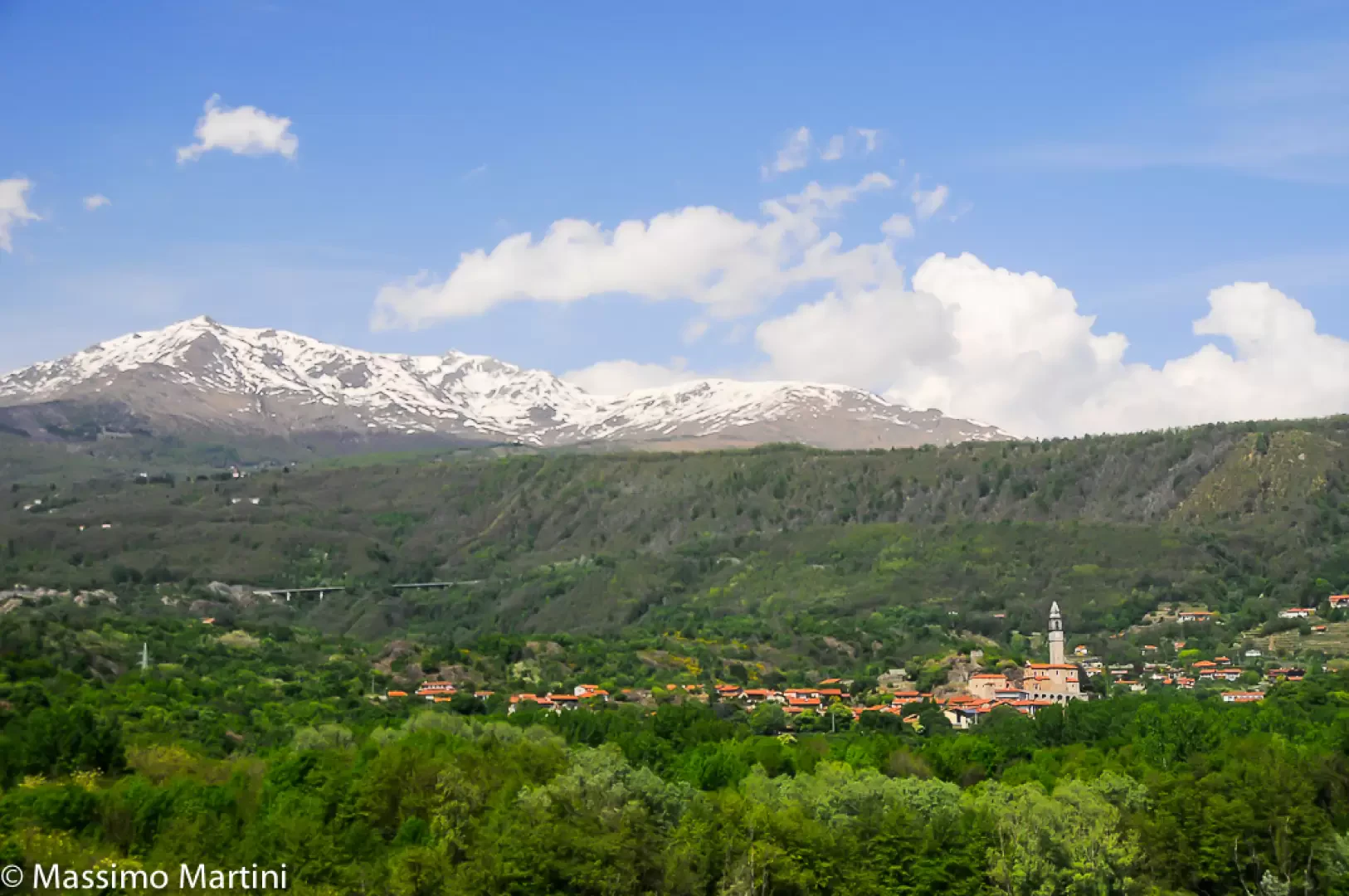Chiaverano

Access
Access to Chiaverano is mainly via the local road network: it can be reached from Turin via the SS26/SR11 and the Canavese road network; the nearest railway station is Ivrea, well connected to the major Piedmontese cities and the Turin-Aosta railway line. Ivrea is only a few kilometres away and is also served by regular buses that facilitate connections with Chiaverano and the surrounding municipalities. Parking is available at various points in the village, especially near the main access roads. The area is not subject to significant seasonal restrictions on traffic or parking, but during periods of high tourist influx it may be advisable to use public services.
Introduction
Chiaverano is a Piedmontese municipality located about 55 kilometres from Turin, on the south-eastern edge of Canavese, a historical region that marks the entrance to the Valle d'Aosta and encloses the largest morainic amphitheatre in Europe, the result of the millennial action of Alpine glaciers. Surrounded by a landscape shaped by the dioritic hills of the Serra Morenica, about 25 kilometres long, Chiaverano offers an extraordinary view of an environment rich in distinctive geological, natural and historical elements. At the foot of the Serra lie the lake basins that make up the area of the five lakes, with a mosaic of naturalistic views of great value. The municipal territory is criss-crossed by numerous paths, woodland lanes, paved mule tracks and ancient country roads, along which man-made artefacts and evidence of ancient glacial activity alternate.
Description
The history of Chiaverano has its roots in an ancient medieval village, traces of which still remain in the ricetto and the remains of the castle. The encounter between nature and the works of man is highlighted by the 'montonate rocks' engraved by glaciers and the large erratic boulders - the 'Rocs' - that represent natural relics of ancient times. An example of ancient viticulture can be seen in the 'Culigne', robust monoliths supporting terraced vineyards facing powerful drystone walls. On the Serra, the locality of Scalveis preserves a large area of chestnut and communal beech woods: once an alpine pasture, today it is criss-crossed by paths that lap the ruins of ruined huts, in a landscape where one can read centuries of relationship between community and environment. The ancient Romanesque church of Santo Stefano, perched on a rocky spur and adorned with 11th-century frescoes, is the last witness to the vanished village of Sessano and watches over the entire neighbouring area where a botanical garden dedicated to medicinal and aromatic herbs is being developed.
Chiaverano is distinguished by the variety and rarity of its flora: the rare dwarf prickly pear, an endemic species, grows on the smooth rocks of Santo Stefano, while birch, broom, cherry and juniper trees alternate in its woods, offering different colours and scents depending on the season. Along the shores of Lake Sirio and in the woods bordering Lake Pistono, one can see the remains of the Roman aqueduct of Ivrea, once built by exploiting the natural contours of the land. In the urban fabric, the 'Bottega del Frér' - an ancient blacksmith's workshop that is now a museum - collects tools and evidence of local craftsmanship. The 'Associazione del Rosmarino' (Rosemary Association), set up to support agriculture and the valorisation of aromatic species, promotes the cultivation of rosemary, which acquires unique flavours and fragrances here thanks to the microclimatic characteristics and the quality of the soil. The 'Bottega del Rosmarino' (Rosemary Workshop) offers the opportunity to get to know and pass on the knowledge associated with this typical crop.
The Chiaverano landscape narrates the centuries-old work of its communities, capable of building over time a harmony between natural resources and human intervention. Among the itineraries that furrow the territory, the attentive visitor discovers values of authenticity and ancient community behaviour. The environment is ideal for short holidays dedicated to relaxation and the outdoors: relaxing walks, trekking, mountain bike itineraries, but also sporting activities such as canoeing, swimming and tennis on the lakes. The picnic areas and the future botanical area make Chiaverano a place of multi-sensory rest and discovery.
Information
Area: 12.02sq km
Altitude: 329m
Maximum elevation: 792m - SMorainic Terrain
Number of inhabitants: 2154
Name in dialect: Ciavran
Name in dialect: chiaveranesi
Patron Saint: Santa Teodora
Neighbouring communes: Donato, Andrate, Borgofranco d'Ivrea, Sala Biellese, Torrazzo, Montalto Dora, Burolo, Ivrea, Cascinette d'Ivrea
Website: www.comune.chiaverano.to.it